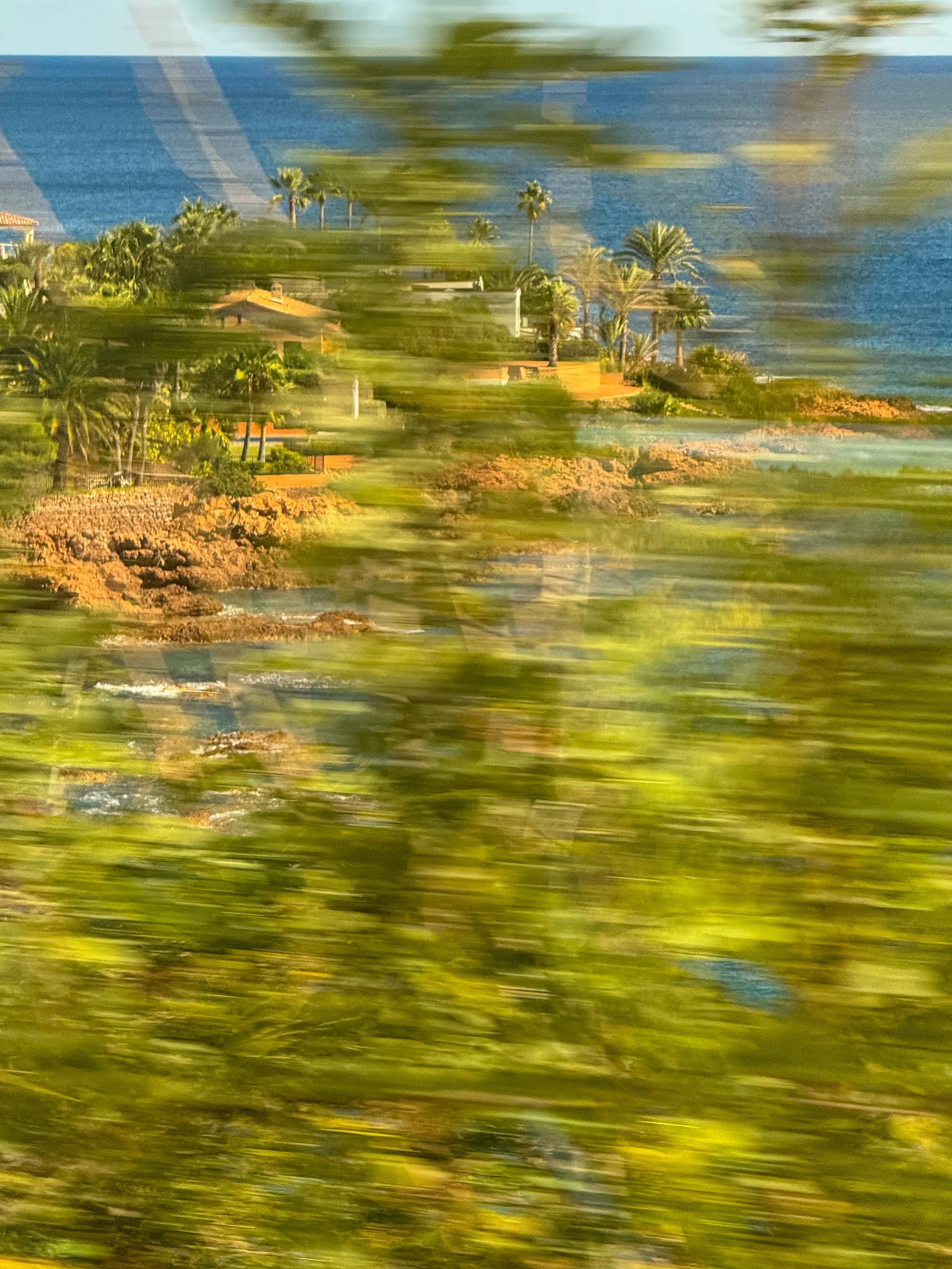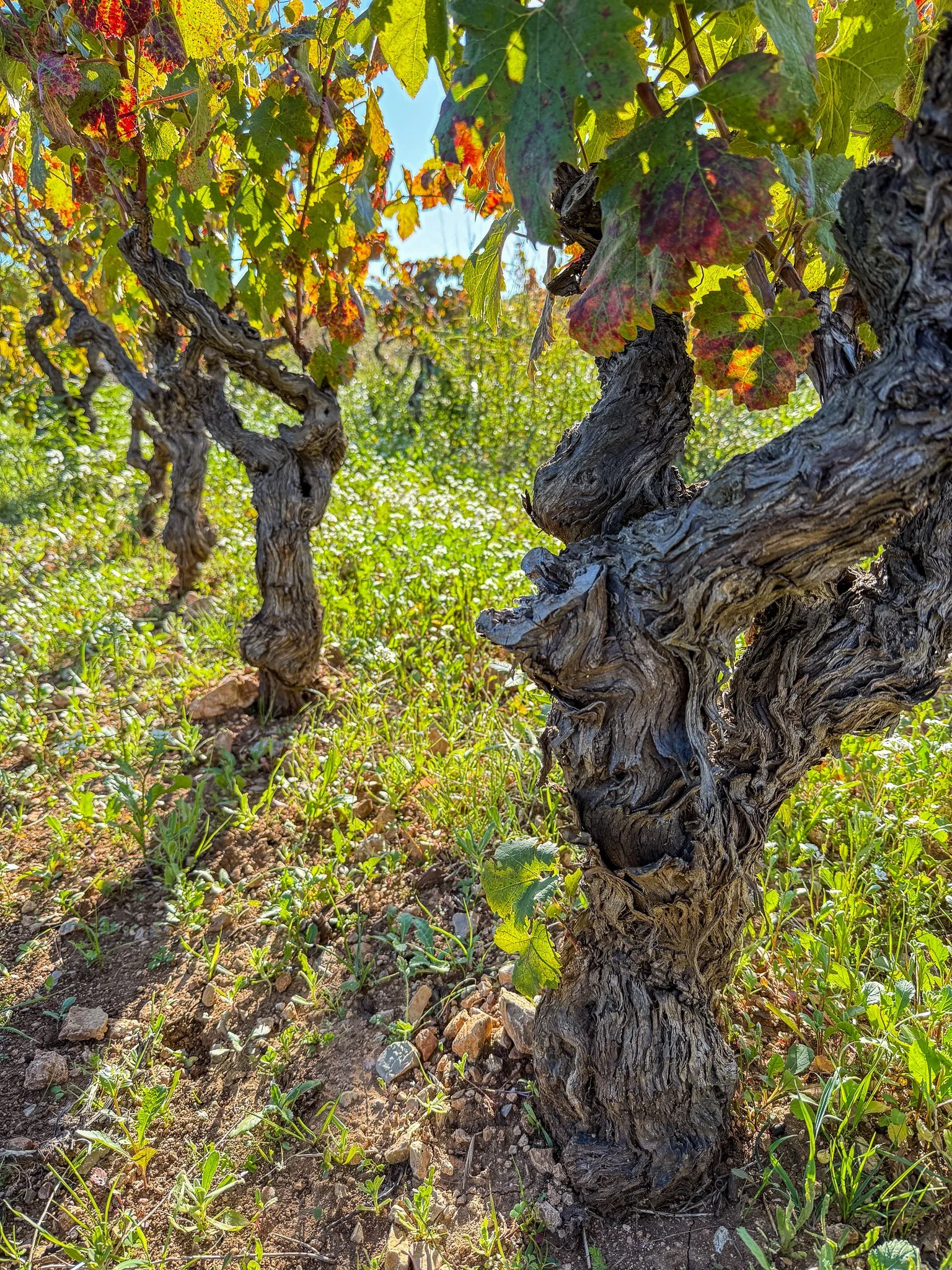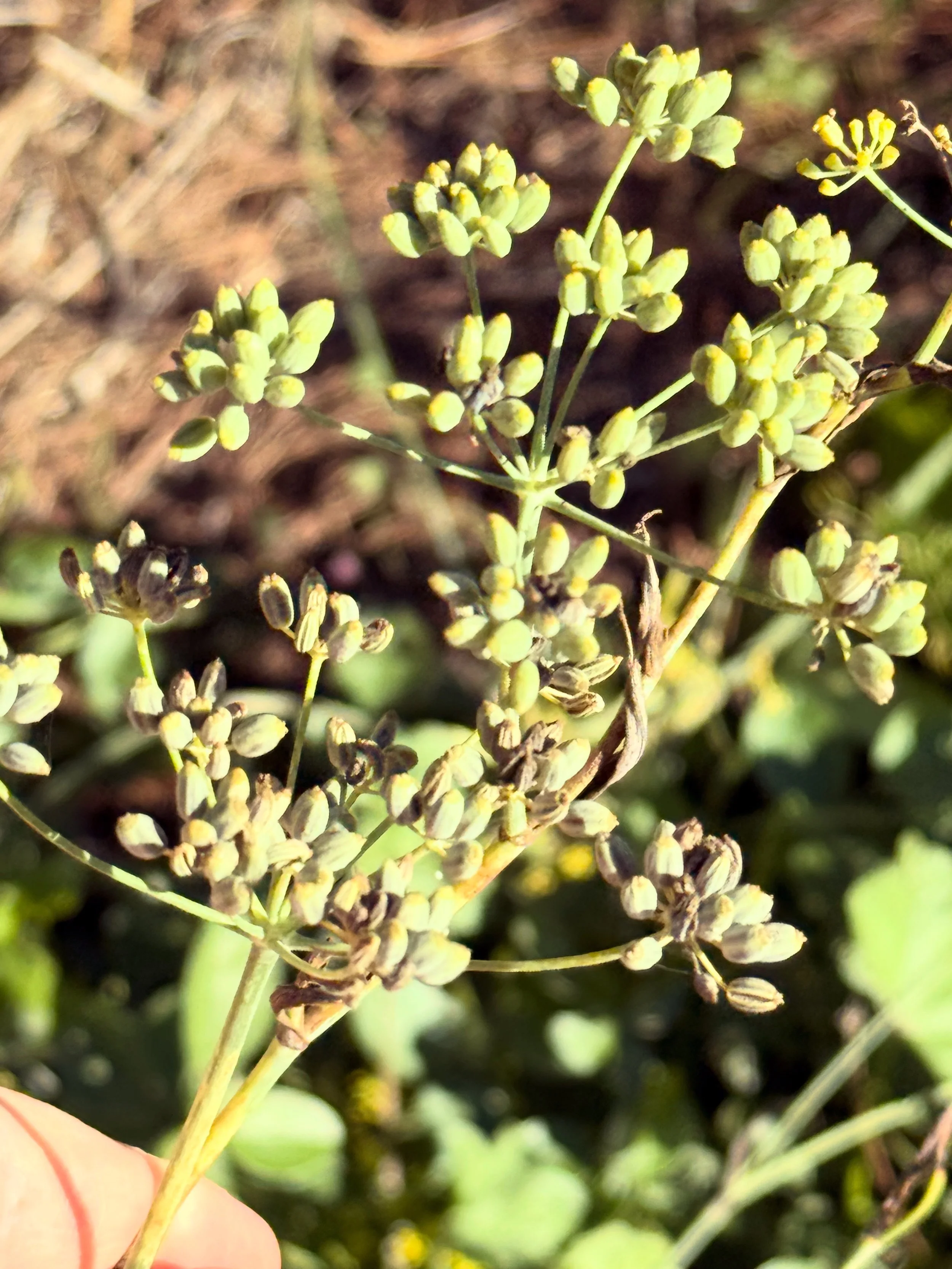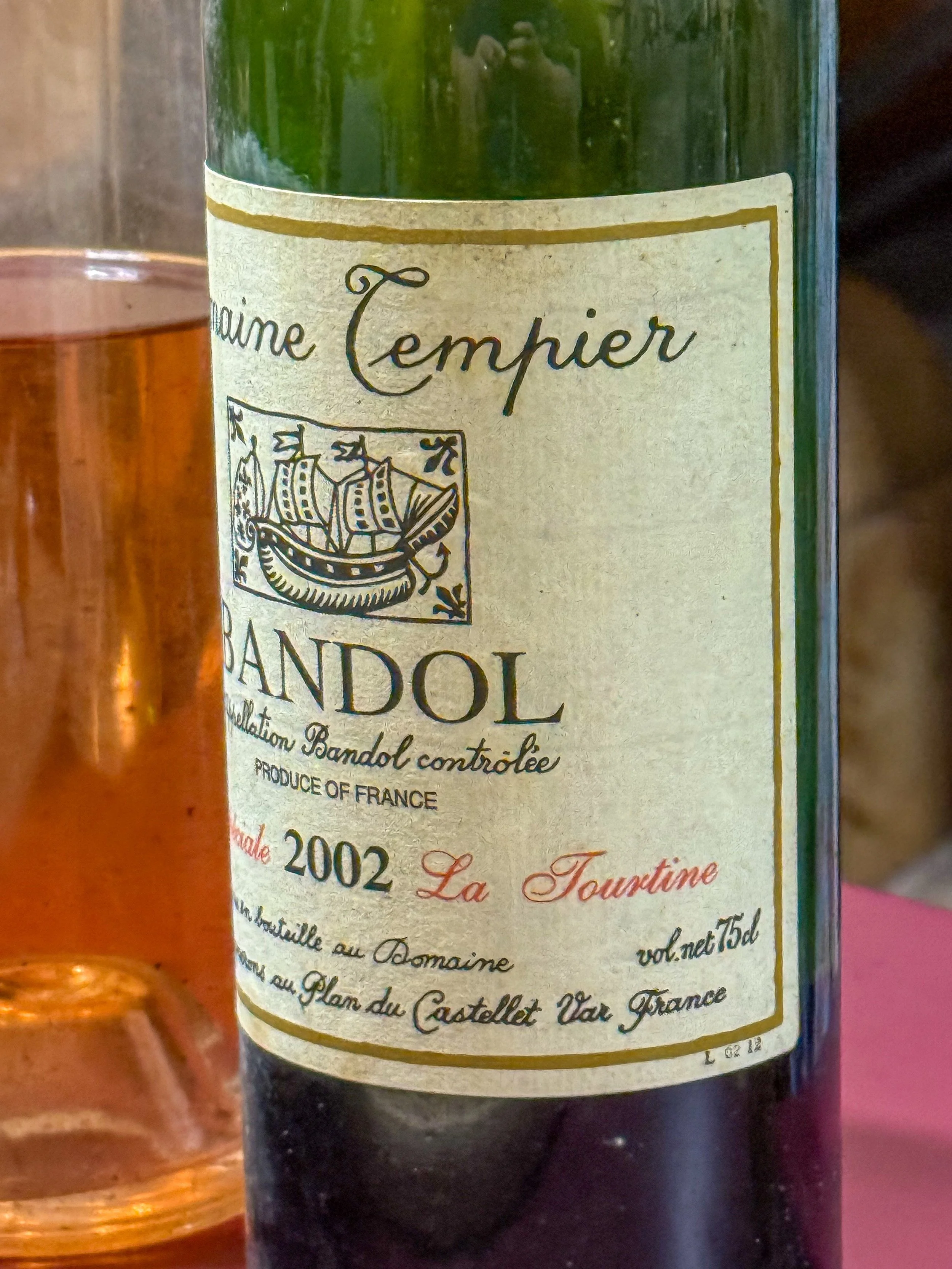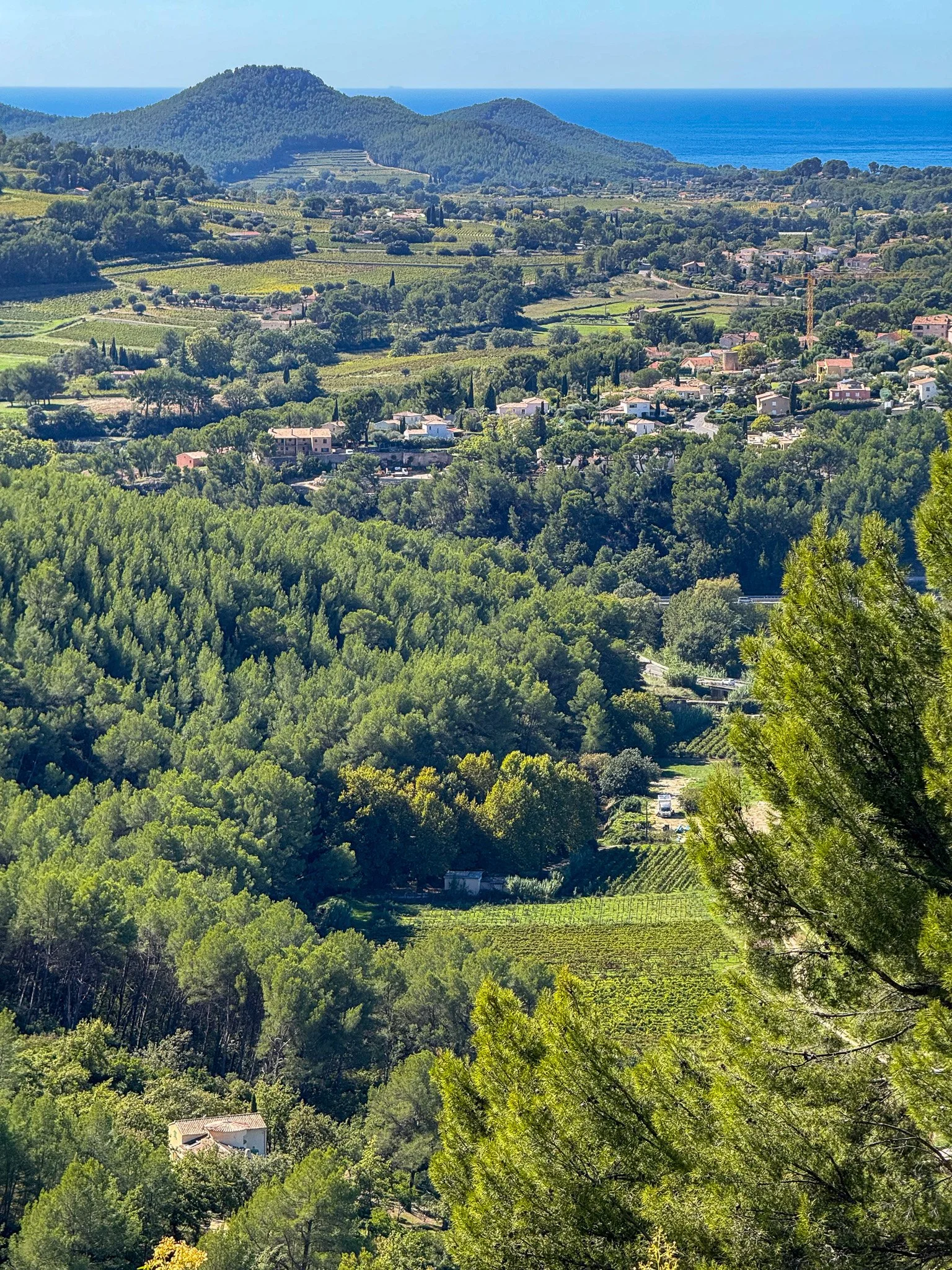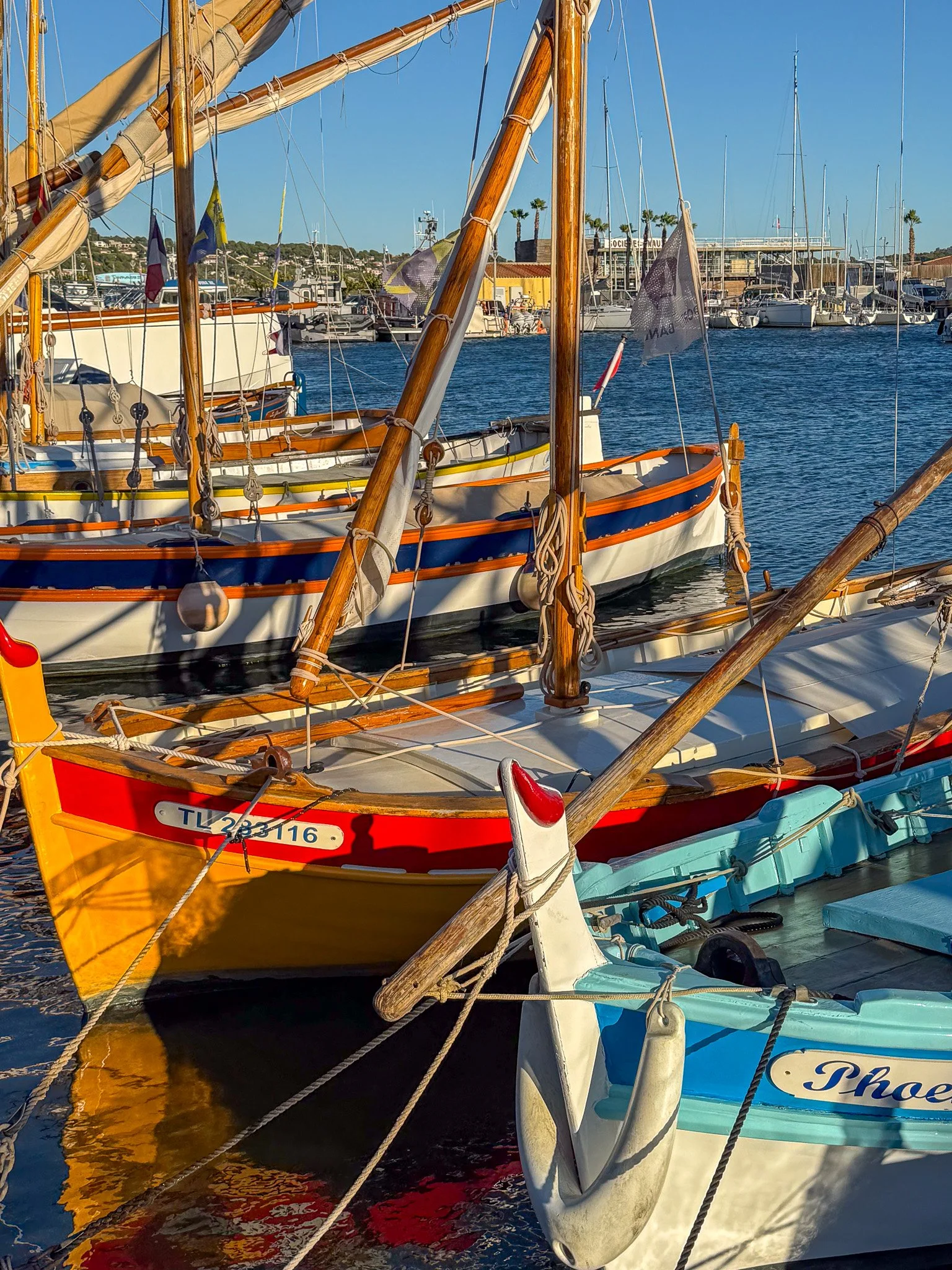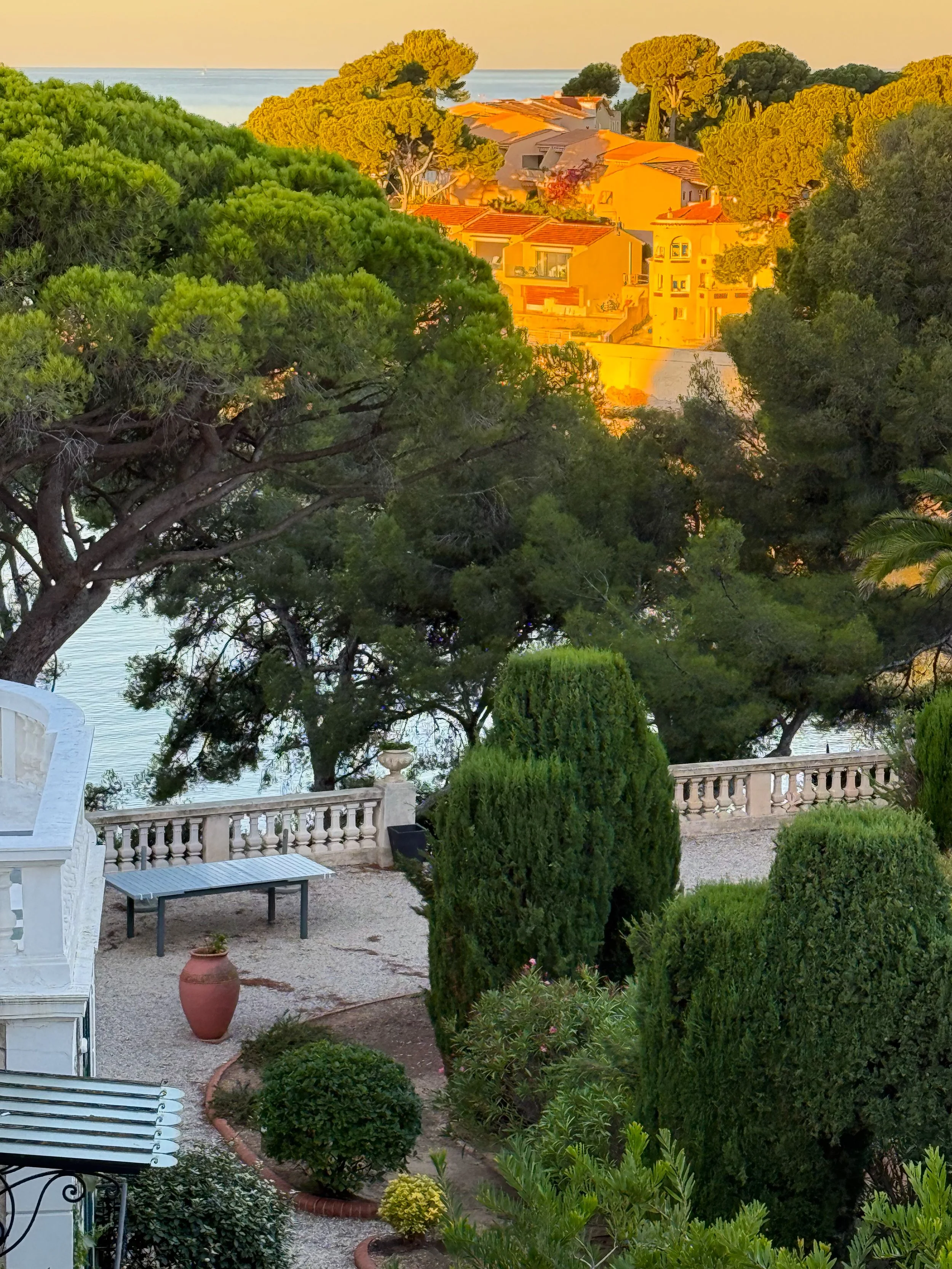Escape to Bandol, quintessential Provence
The TGV speed train can whisk me anywhere in an hour or two
It had been ten months since I last sat behind the wheel of a car, so I shouldn’t have been surprised when I found coordinating myself with traffic a bit unnerving. Especially French traffic, where they are happy to ride your bumper. I hadn’t even driven two kilometers out of the rental car lot in Bandol, France, when I clipped the edge of a small roundabout with my right front tire. BOOM! My first thought wasn’t whether I had blown a tire or perhaps damaged the front scoop because the shock of it was loud, but only, thank God my wife isn’t with me right now to witness this. After pulling over and surveying the car, expecting the worst, I thankfully saw nothing. The tire was marked for sure, but no worse for wear. I got back on the road; my nerves rattled and began climbing the twisting uphill road. It’s nothing like riding a bike. Whoever said that obviously hasn’t driven in France.
My wife wasn’t with me because she was back in Taiwan visiting her family and taking care of some paperwork that she needs to maintain her long stay residency and to obtain her health care identity card here in France. She had already been gone for a couple of weeks, and I had mostly stayed locked up in our apartment spending my days studying for an upcoming test for my WSET diploma, a wine certification that I started working on in 2023 at a school in Portland but had stopped after passing two sections, but failing a third, of the six-section test. After traveling for nearly a year, then moving to France, I was ready to pick it back up again. So in June, I transferred my studies to the main school, which is based in London. After an intense three months of eating, drinking, and sleeping Wine Business, I needed a break and a change of scenery, so I put myself on the train to Bandol, a stunning Provençal coastal town with azure-blue water and hills surrounding it covered with vines and olive trees. This was why I had moved to Europe wasn’t it? So, I could spontaneously just go. In an hour or two I can be in places I had only read about or seen on a map back home.
After my little heart attack in the car, it was still early in the morning as I drove towards the village of Ollioules, east of Bandol. I had arranged for a private tour at Domaine de Terrebrune, a winery whose wines I had tasted before, and where I knew I’d find quality. The weather was cooperating, that’s for sure. It was an ideal 72 degrees as I ducked into hollows and curved back up again over knolls. The sun blazed though patches of fog hanging among the oak and olive trees covering the hills. I rolled the windows down and I was instantly met with the smell of garrigue, a French word for low scrubland. If you’ve ever taken a big whiff of a jar of herbs de Provence, then you know what I am talking about. It’s that distinctive mix of lavender, thyme, rosemary, and sage, only in the wild, it’s even more earthy because you are also getting the aromas of the land itself, and of juniper, oak, and bay trees. It permeates the air with an intoxicating aroma, and if you’re wondering if it somehow makes it into the wines themselves, I can tell you that it does without a doubt. It’s one of the best things about the wines from this area.
As I came up over the last rise and made a sharp turn to the left, there descending into a valley below me was an ocean of grapevines. Off in the distance was the long escarpment known as the Gros Cerveau, or Big Brain, a massive limestone cliff that dominates the skyline. I guess the end of it does sort of look like a brain with its white limestone precipice, but I have learned that “cervèu" translates into French as “brain," “lou cervèu" is, in this case, a variant of “lou cèrvi," meaning “the deer." It definitely looks more like a wave to me than it does a brain or a deer.
Descending into the Ollioules valley with Gros Cerveau in the distance
Domaine de Terrebrune
Old Mourvèdre vines
I found the small road that took me to the front of the estate. I turned left in front of the large, rusted steel sign with Terrebrune laser cut into its face and proceeded slowly up the road past vines that were at least fifty years old as I approached the main house, their thick trunks twisting out of the brown earth, their leaves just beginning to turn red and orange. I saw no fruit hanging letting me know that harvest was already complete for this year.
I parked behind the winery and began walking towards a woman I saw out front. I was more than an hour early because I was hoping I would be able to walk through the vines on my own. I approached her and introduced myself. She said her name was Camille and with a warm smile she invited me to enjoy my walk among the vines and said she would meet me in an hour to show me the cellar and to taste some wines.
The vineyards of Domaine de Terrebrune and the Mediterranean in the distance. (Photo courtesy of Domaine de Terrebrune)
Wild fennel in the vineyards
Ancient seabed stones lay about in the vineyards of Terrebrune
Mourvédre grapes
Olive trees on earth longer than you, or me, or anyone living
Vineyards stretched before me in every direction, but what couldn’t be ignored was the Mediterranean Sea off to the south. The rooftops of Sanary-sur-Mer at the water’s edge, the lighthouse atop the little island of Île du Grand Rouveau afloat in the sea just beyond. It was quite the stage and told a story of land and sea combining to make powerful, age-worthy wines dating all the way back to Roman times.
I waded into the vines and began my excursion allowing my senses to waken. Again, my sense of smell was triggered, the fresh earth, the ground cover between the rows of vines, and the wild herbs. I spotted wild fennel stalks waving in the breeze. I picked a couple of seeds from their heads and put them into my mouth, gently crushing them with my front teeth. The explosion of licorice made me smile. I recognized the flavor from previously drinking the wines from this area. There were giant chunks of stone strewn everywhere. I know from my studies that the soils here are very old and date back to between the Cretaceous and the Triassic period, between 150–200 million years ago. The entire area was a seabed for millions of years. The soil was a reddish-brown, rich in iron, thus the name, Terrebrune. I picked up a stone the size of a baseball and could see holes where ancient tiny oysters once settled to the bottom of the sea, veins of pink granite, and white limestone, all pushed up to the earth’s surface by continental subduction as the European plate folded under and the African plate. Flies and wasps swarmed me as I picked Mourvèdre grapes from the unusable grape clusters left behind and popped them in my mouth. They were sweet and the pips were brown and ripe as I spit them out like Tom Sawyer.
Up one row and down the other I went for nearly an hour. This plot had thinner trunks, that one thicker. I could see the different plantings over the decades. There were terraced walls where people had stacked the stones, helping to divert the rains when they came, and I saw ancient olive trees at the ends of rows, and wild grasses and clover. This was organic grape growing at its finest and it was easy to see how healthy the vines were, and the land. Bees, wasps, flies, birds, the sun and the salty wind from the nearby sea all making their contribution to these delicious and hearty wines.
When it was finally time to go and taste the wines, I met with Camille again and she took me down into the cellar where the barrels were aging. Barrels of all sizes from the enormous hectoliter-sized foudres to the traditional 225-liter barriques. We tasted the famous rosés from this area which are unlike rosé from anywhere else in the world. Here, they are serious wines that offer complexity—notes of grapefruit, strawberry, and watermelon set against a backbone of stones and wild herbs. All of those smells, herbs, and stones I experiences earlier in the morning were right there in the wines. Scientists say it isn’t possible for the vines to absorb those flavors through their roots. Those of us who love wine and have been drinking it for our lifetimes know that it’s getting in there somehow. I suppose it makes no difference how, nor does it seem to matter if the wines are rosé, white, or red. They all have this wonderful terroir, the taste of this place that is unlike any other place.
Bottles from the 1970s and 80s in Domaine de Terrebrune’s cellar
2002 La Tourtine from Domaine Tempier
2020 Domaine de Pibarnon
Over the next two days I also visited Domain de Pibarnon and Domaine Tempier. Two more famous wineries with superb wines. I drove through the hills to take photographs and experience the different vineyard sites. In the north of Bandol is the Castellet region and there the soil changes into more of a sandy consistency and is laced with a calcareous stone called blue marl, a mix of compressed blue clay and limestone. It’s strewn about just as the limestone was at Terrebrune. The wines here taste different because the soil is different although they have the same exposure to the sea. In the evenings I tried wines from Domain Ray-Jane, and Domaine de la Bégude at the restaurants where I ate in Bandol near my hotel.
When I wasn’t in the vineyards, I visited the small towns surrounding Bandol. I had a lunch of fire-grilled octopus and garlic-parsley gremolata in the medieval village of Le Castellet perched high on top of a cliff with panoramic views of the surrounding hills and the Mediterranean. I climbed the steps in the village of La Cadière-d’Azur with its beautiful colored houses and blue shutters. I visited Le Beausset, Plan du Castellet, and Saint-Cyr-Sur-Mer. I have been to so many Provençal villages over the last year and a half and you would think they are kind of the same, and to some degree they are. But then again, each is unique, and each is beautiful offering wildly different views, tiny streets to get lost on, beautiful stones façades and Provençal colors of Venetian red, ochre, pastel orange and sunny yellows contrasted with blue doors and windows. I don’t ever tire of it; I find it very charming. The little boulangeries with the cheerful madams. The terraces. Even the stairs.
At night I walked along the Bandol harbor and took in the sights, the carousel, the sea, the yachts and dinghies moored along the waterfront, the moon was full while I was there. One night, there was a DJ playing disco music in the plaza near the fountain and there were dozens of senior citizens dancing with great joy. Women spun round and round lost in the music of their youth, their partners stood close by arms extended to catch them just in case, smiling, and enjoying the moment.
Amphitheater-style terraces with walls made of limestone are one of the signatures of the Bandol region.
Chunks of calcareous stone in the vineyards
Vineyards above Saint-Cyr-Sur-Mer get a lot of heat during the day and the cooling effects of the Mediterranean at night
The view from the medieval town of Le Castellet
On the last night I treated myself to a fine dining experience at the Michelin-starred restaurant Les Oliviers (The Olive Trees) in Bandol right on the Renécros cove, near my hotel. The restaurant is in the five-star Hôtel Ile Rousse, where rooms are at least four digits, but for such a beautiful restaurant, with a glass wall view of the water, it was surprisingly affordable. I let them bring me whatever and let the sommelier pair the courses with whatever glasses of wine he thought were appropriate and I just enjoyed being surprised and delighted through the service. The food was absolutely worthy of the star. I can’t wait to take Chien-hui.
One funny thing I noticed about the French who dined around me over the few days I was in Bandol is just how long it takes them to order their food. Couples on dates, families, groups of friends, it didn’t seem to matter. They plotted and discussed everything on offer, flipping menus over and over, turning pages back and forth, often calling over the waiter or owner depending, to get their questions answered, the ingredients and their preparations elaborated on, and then further deliberations ensued. The French are, of course, famous for how seriously they take their food, and I thought this was just further evidence that they don’t make decisions about what they eat lightly. Whereas I was happy to let the professionals take me on a journey, assuming whatever they put in front of me would be delicious, that would be far too risky for many of the French people who tend to be conservative and formal. If only the process of choosing their meal could be completed with a stamp of some kind to make it official.
Bandol harbor
The view from my hotel balcony
From Restaurant Les Oliviers: Scallop and mussels in a seaweed foam broth with edible flowers, pumpkin seeds, and fennel fronds on homemade ceramic dish ware. This epitomized the Bandol region in one dish
On the train home yesterday, I sat next to a young man from Chile, and we discussed his beautiful country, a place I would love to go and wines I would love to taste. By the time we arrived in Nice I had seen dozens of photos on his phone of glaciers, lakes, the ocean, the mountains, and of his family and his girlfriend. We exchanged information and I left him in Nice to change trains with a standing invitation and a promise to be shown the vineyards in both Chile and Mendoza, Argentina, if we make the journey to Santiago. His brother is in the wine business there. Oh yeah, Chile anyone?
It was a wonderful few days in Bandol. The only things missing was my dear wife. She’ll be home soon, and will be meeting me in London on test day.
